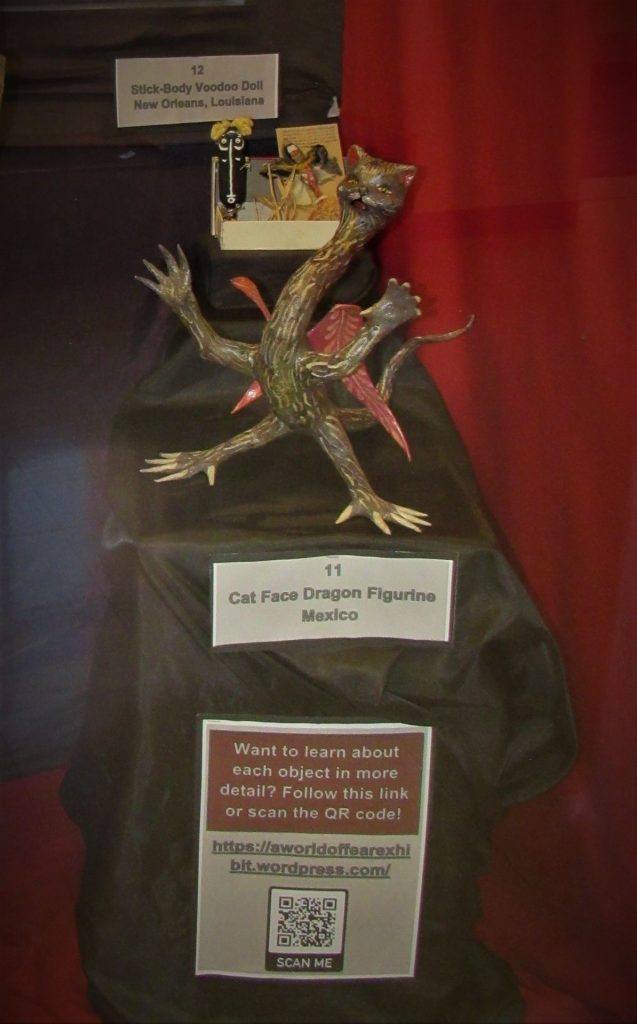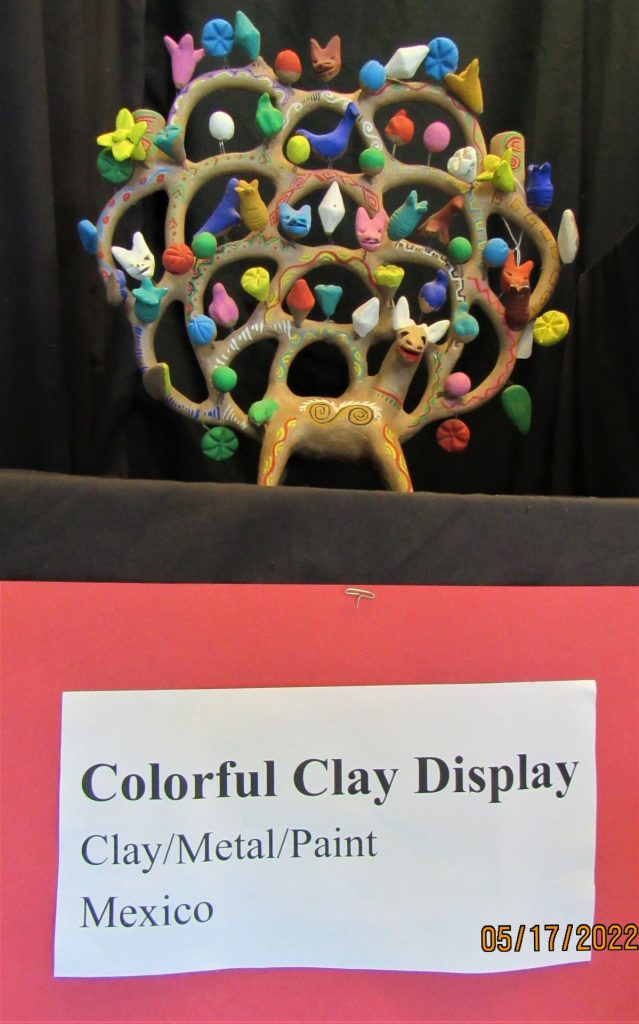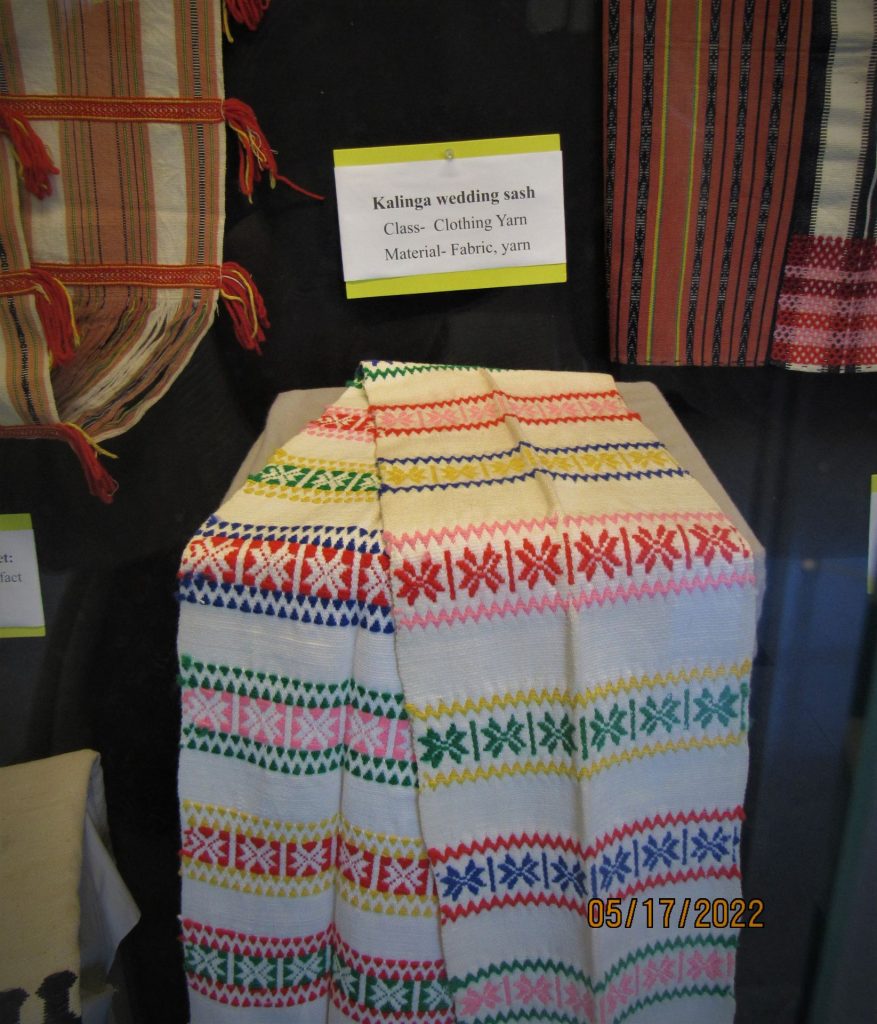

Nearly every spring the Department of Sociology and Anthropology provides a class for student participation and hands on interaction with unique and amazing artifacts from around the world. From China to Brazil and Spain to New Zealand, covering 97 regions or countries, our ethnology collection provides a vast resource for students in Museum Studies (ANT 374).
Dr. Kate Driscoll had the privilege, once again, of teaching Museum Studies, with the stated objective of providing an opportunity to examine the “history, organization, and administration of museums as well as the methods of acquisition, preservation and exhibition of artifacts.” As you continue down the page, you will see the group work and descriptions of their glass case displays, showcasing the culmination of a semester’s efforts. Take a trip down the second floor of the west wing of Schroeder Hall to see these exhibits in person, or visit the complete digital Ethnology Teaching Collection through Milner Library.


A World of Fear by Laura Erickson, Chell O’Doran, and Quinn Sherwin
To build common understandings and a broader, more connected world community, this exhibit features artifacts from different cultures which may cause a sense of fear or discomfort within the viewer. Displayed herein are objects which represent fear within their culture of origin, and some which do not but may still give that feeling to a western audience.
By using culturally specific symbols and iconography we can examine how our fear instincts are culturally formed and develop a way of viewing the cultures of others with more nuance and understanding.
We are presenting the artifacts in a way that challenges the viewer to think about them with an emphasis on cultural relativism. Questions such as, “How are fears represented?” and “How are fears the same across cultures or different across cultures?” can be asked.
What are you afraid of, and how might that differ from other people around the world? Come to our exhibit to find out!

Mexican Traditional Masks by Tucker Rogan, Kathryn Gomez, and Lillian Kell
As a group, we found that we were all interested in the Mexican traditional masks. We believed that this was the largest collection that the school owned, having multiple shelves of masks. Therefore, we felt that we would have the most opportunities or ways to arrange our exhibit. We aimed to represent Mexican culture through their traditional masks. A majority of the masks are for ceremonial purposes such as the indigenous devil faces, while some are decoration or art pieces. As we aimed to represent Mexican history through the masks we also intended to keep things simple. Our exhibit is somewhat self explanatory to the viewer and allows them to also credit the great craftmanship.

Ceremonial Tableware by Brianne Bittenbinder, Elena Cotter, Michaela Schroeder
Our exhibit features ceremonial tableware from China, India, and Nepal with the goal of educating our audience on the similarities and commonalities between them; specifically, how they contrast in material, embellishment, and use. Ceremonial tableware is normally used for special occasions and is made of precious materials such as gold or silver. The artifacts are presented representing a dining table with each country having their own setting, and other household items are included to make the space feel as though a meal is taking place in a home.


North American Animal Art by Maddie Davidson, Casey Oskroba, Lilah Bobinski, and Tony Vecchio
Our exhibit is called North American Animal Art. It covers a variety of countries in North America from different time periods that created art in the form of animals. We compared and contrasted the different materials and types of animals that were found in these different countries. There were no overlaps in countries that made art but there was one country that had used an animal multiple times. That country is Mexico and the animal is a bull. There were three instances where this animal came up in the artwork of this country with two of the three using the same primary material: clay. It was found that throughout the four different countries that we observed, those countries being Mexico, the United States, Costa Rica, and Canada, clay and metal were heavily used throughout all of the countries. While there were some other materials used, such as wood and stone, it was clay and metal that were the most prevalent throughout the countries. This ties them all together to create one collection of art pieces.

Made in Japan by Jen Bresley, Renee Fishburn, and Jon Otto
Our museum exhibit, Made In Japan, showcases the different styles of Japanese toys categorized by the materials used in construction. The different materials, such as wood and paper used in creating the toys, are divided into two sections of our exhibit. We have various styles of toys and recreational objects throughout the different regions in Japan and showcase them in a manner that pays tribute to the artisanship and craftsmanship used in creating these toys. A few of our favorite items in the exhibit include an 8-foot-long paper Dragon kite and the Maneki-Neko Cat statue that signifies good fortune. Another favorite is the Japanese Daruma Doll we have as the focal point in our exhibit. Another symbol of good luck, this doll, is often painted in different colors, with each color representing a specific meaning. The eyes are also unfinished as the owner of the Daruma Doll is to draw them in once the wish they made has come true. The Dragon kite, Maneki-Neko Cat, and the Daruma Doll are just a few of the amazing pieces in our exhibit showcasing these exquisite Japanese toys. Each piece displayed in the exhibit is accompanied by an informational card explaining the significance behind the toy and why they were made. The items are separated by material to showcase the differences in construction and use between paper and wood. Each method of construction includes a small analysis of why toys were made out of wood instead of paper and vice versa.

Philippine Textiles by Ayushi Shukla, Julia Carranza, Charlie Nangle, and Allie Saunders
Our exhibit is meant to present traditional Philippine textiles. The display contains six different textiles that have different purposes. For example, there are two woven loincloths of different designs and lengths as well as a tapis skirt, a burial blanket, a striped loincloth, a Kalinga wedding sash and a sateen kerchief. Near each textile, we placed text to show what it was generally meant for and the material it was made of.
Come check out the art and history captured within the beautiful fabrics of the Philippines.
